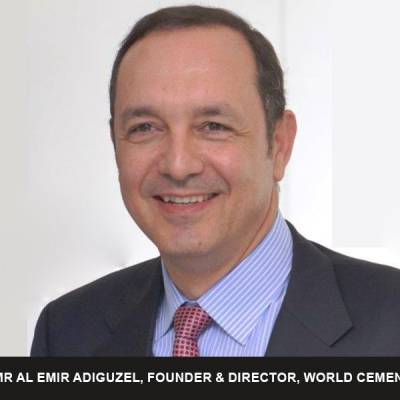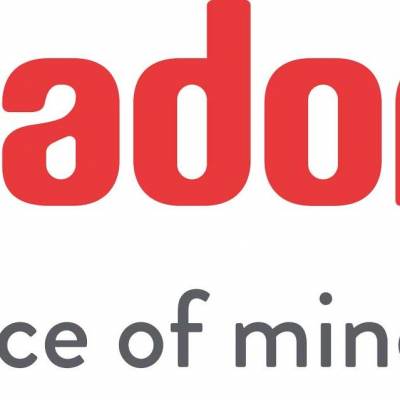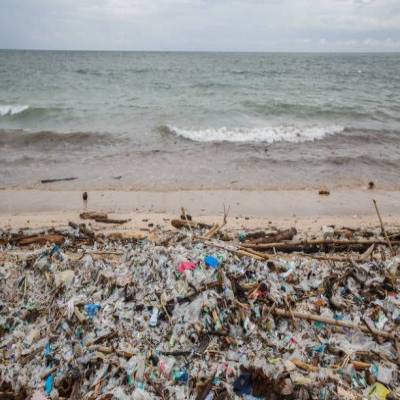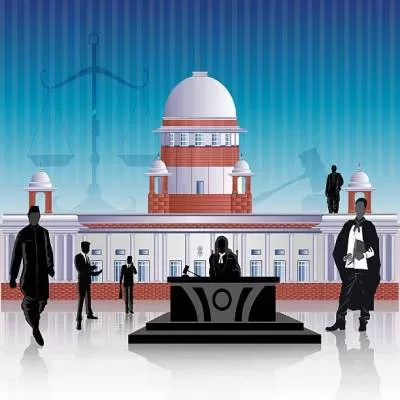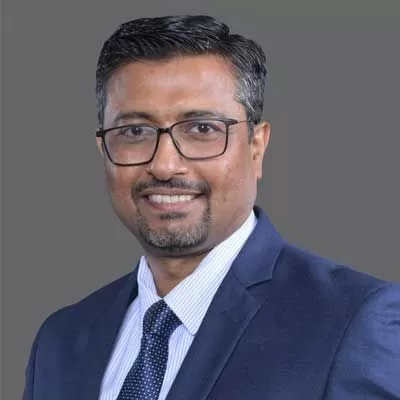- Home
- Infrastructure Urban
- ECONOMY & POLICY
- Scaling New Heights
Scaling New Heights
Rarely can a commercial bank building claim to be green. This new, 400,000 sq ft, $85 million expansion of the headquarters for the KfW Bank in Frankfurt is an exception. The KfW Westarkade Bank stands tall with its colourful façade, housing 700 employees. Estimated to consume 7 kwh (24,000 btu) per sq ft per year, this will be one of the world's most energy-efficient office towers.
The building: Founded in 1948, KfW is now owned by the German government and is one of the 10 largest banks in the country. Its base has a curvy, four-storey podium that reinforces the street edge and defines a small green space in the rear, which also serves as a backdrop for a public botanical garden. The podium connects with adjacent KfW buildings on several levels. The 10-storey tower that rises from the podium has an undulating form that responds to prevailing wind directions and the sun's daily and yearly path. This maintains access to daylight and yet is in perfect sync with the architecture of the late 1940s and early 50s.
Green features: According to energy models, the new building's primary energy consumption for operations will be only 9.1 kwh per sq ft. This will be possible through strategies like thermal activation of the slabs and a recovery system that captures heat from the data processing centre and exhaust air.
The building's most unusual feature is a double-skin façade, called the 'pressure ring'. The envelope consists of an encircling saw-tooth-shaped cavity, 28 inch wide at its deepest point, and encloses automated blinds that help block solar gain and control glare. This ring is defined on the exterior by fixed, tempered-glass panels and colourful ventilation flaps, and on the interior by alternating, operable and fixed argon-filled insulated glazing units incorporating a low-E coating. The dynamic system negates the effects of variable pressure around the building, enabling natural ventilation much of the year. Occupants can open windows in the inner skin, regardless of the season, without draughts or heat loss. The system reduces detrimental cross ventilation to a convenient minimum.
The building management system also opens or closes the flaps to introduce fresh air and create a zone of consistent pressure surrounding the curtain wall's inner skin, while producing a slight pressure differential between the cavity and the building's interior. The air is then drawn into offices through floor vents near the perimeter or the occupant-controlled windows, and subsequently exhausted through the building core.
The right choice: KfW Westarkade was also recognised as the Best Tall Building in Europe. Despite an intense debate on the other four strong contenders for the overall category, KfW Westarkade made the mark with the clever stitching together of the urban habitat.
KfW Key Parameters
Gross area: 420,000 sq ft (39,000 sq m)
Completed: May 2010
Annual purchased energy use (based on simulation): 24 kBtu/sq ft (277 MJ/sq m)
Annual carbon footprint (predicted): 9 lb CO2/sq ft (43 kg CO2/sq m)
Local shores
Lodha World One, slated to be the world's tallest residential tower, is located in Mumbai, India and is expected to be complete by 2014. This building is over 117 storeys and 1,450 ft high. And, riding on this height is its aspiration for the IGBC Gold LEED, which will make it one of the only 100+ storey buildings in the world to receive this certification. Designed to manage the effect of wind and seismic movements, special measures have been taken to ensure the highest levels of fire safety in World One. These include fully automated fire detection and sprinkling systems, dedicated pressurised fire staircases and high-speed fire lifts.
So, how marketable are tall green buildings on the whole? Pranay Vakil, Chairman, Knight Frank Pvt Ltd, says, "Tall buildings have to pay more attention to energy savings than regular buildings, since they are more exposed to harsh climate. Hence, greening has become a compulsion. Every professional involved: the builder, developer, architect, etc, is ready to spend that small incremental sum to make tall buildings as energy efficient as possible." But, what about the consumer? "While buying a flat in a residential building, other priorities like the layout or design outweigh energy saving," says Vakil. "Did you know that the prices of flats on floors beyond the 60th in Lodha World One are lesser than those below? This indicates that may be people do not have much confidence in the fire fighting system, especially given that fire ladders, etc, can only reach a set number of floors in a building. Or they do not normally prefer to live that high up. However, greening a tall hotel or commercial building does add to its marketability, given that for most companies green tops the list," concludes Vakil.
To share your views on the above article, write in at feedback@ASAPPmedia.com
Located in Frankfurt, Germany, and designed by Sauerbruch Hutton architects, KfW Westarkade was recently awarded the 2011 Overall 'Best Tall Building Worldwide' by the Council on Tall Buildings and Urban Habitat.Rarely can a commercial bank building claim to be green. This new, 400,000 sq ft, $85 million expansion of the headquarters for the KfW Bank in Frankfurt is an exception. The KfW Westarkade Bank stands tall with its colourful façade, housing 700 employees. Estimated to consume 7 kwh (24,000 btu) per sq ft per year, this will be one of the world's most energy-efficient office towers.The building: Founded in 1948, KfW is now owned by the German government and is one of the 10 largest banks in the country. Its base has a curvy, four-storey podium that reinforces the street edge and defines a small green space in the rear, which also serves as a backdrop for a public botanical garden. The podium connects with adjacent KfW buildings on several levels. The 10-storey tower that rises from the podium has an undulating form that responds to prevailing wind directions and the sun's daily and yearly path. This maintains access to daylight and yet is in perfect sync with the architecture of the late 1940s and early 50s.Green features: According to energy models, the new building's primary energy consumption for operations will be only 9.1 kwh per sq ft. This will be possible through strategies like thermal activation of the slabs and a recovery system that captures heat from the data processing centre and exhaust air.The building's most unusual feature is a double-skin façade, called the 'pressure ring'. The envelope consists of an encircling saw-tooth-shaped cavity, 28 inch wide at its deepest point, and encloses automated blinds that help block solar gain and control glare. This ring is defined on the exterior by fixed, tempered-glass panels and colourful ventilation flaps, and on the interior by alternating, operable and fixed argon-filled insulated glazing units incorporating a low-E coating. The dynamic system negates the effects of variable pressure around the building, enabling natural ventilation much of the year. Occupants can open windows in the inner skin, regardless of the season, without draughts or heat loss. The system reduces detrimental cross ventilation to a convenient minimum.The building management system also opens or closes the flaps to introduce fresh air and create a zone of consistent pressure surrounding the curtain wall's inner skin, while producing a slight pressure differential between the cavity and the building's interior. The air is then drawn into offices through floor vents near the perimeter or the occupant-controlled windows, and subsequently exhausted through the building core.The right choice: KfW Westarkade was also recognised as the Best Tall Building in Europe. Despite an intense debate on the other four strong contenders for the overall category, KfW Westarkade made the mark with the clever stitching together of the urban habitat. KfW Key ParametersGross area: 420,000 sq ft (39,000 sq m) Completed: May 2010 Annual purchased energy use (based on simulation): 24 kBtu/sq ft (277 MJ/sq m) Annual carbon footprint (predicted): 9 lb CO2/sq ft (43 kg CO2/sq m)Local shoresLodha World One, slated to be the world's tallest residential tower, is located in Mumbai, India and is expected to be complete by 2014. This building is over 117 storeys and 1,450 ft high. And, riding on this height is its aspiration for the IGBC Gold LEED, which will make it one of the only 100+ storey buildings in the world to receive this certification. Designed to manage the effect of wind and seismic movements, special measures have been taken to ensure the highest levels of fire safety in World One. These include fully automated fire detection and sprinkling systems, dedicated pressurised fire staircases and high-speed fire lifts.So, how marketable are tall green buildings on the whole? Pranay Vakil, Chairman, Knight Frank Pvt Ltd, says, Tall buildings have to pay more attention to energy savings than regular buildings, since they are more exposed to harsh climate. Hence, greening has become a compulsion. Every professional involved: the builder, developer, architect, etc, is ready to spend that small incremental sum to make tall buildings as energy efficient as possible. But, what about the consumer? While buying a flat in a residential building, other priorities like the layout or design outweigh energy saving, says Vakil. Did you know that the prices of flats on floors beyond the 60th in Lodha World One are lesser than those below? This indicates that may be people do not have much confidence in the fire fighting system, especially given that fire ladders, etc, can only reach a set number of floors in a building. Or they do not normally prefer to live that high up. However, greening a tall hotel or commercial building does add to its marketability, given that for most companies green tops the list, concludes Vakil.To share your views on the above article, write in at feedback@ASAPPmedia.com


